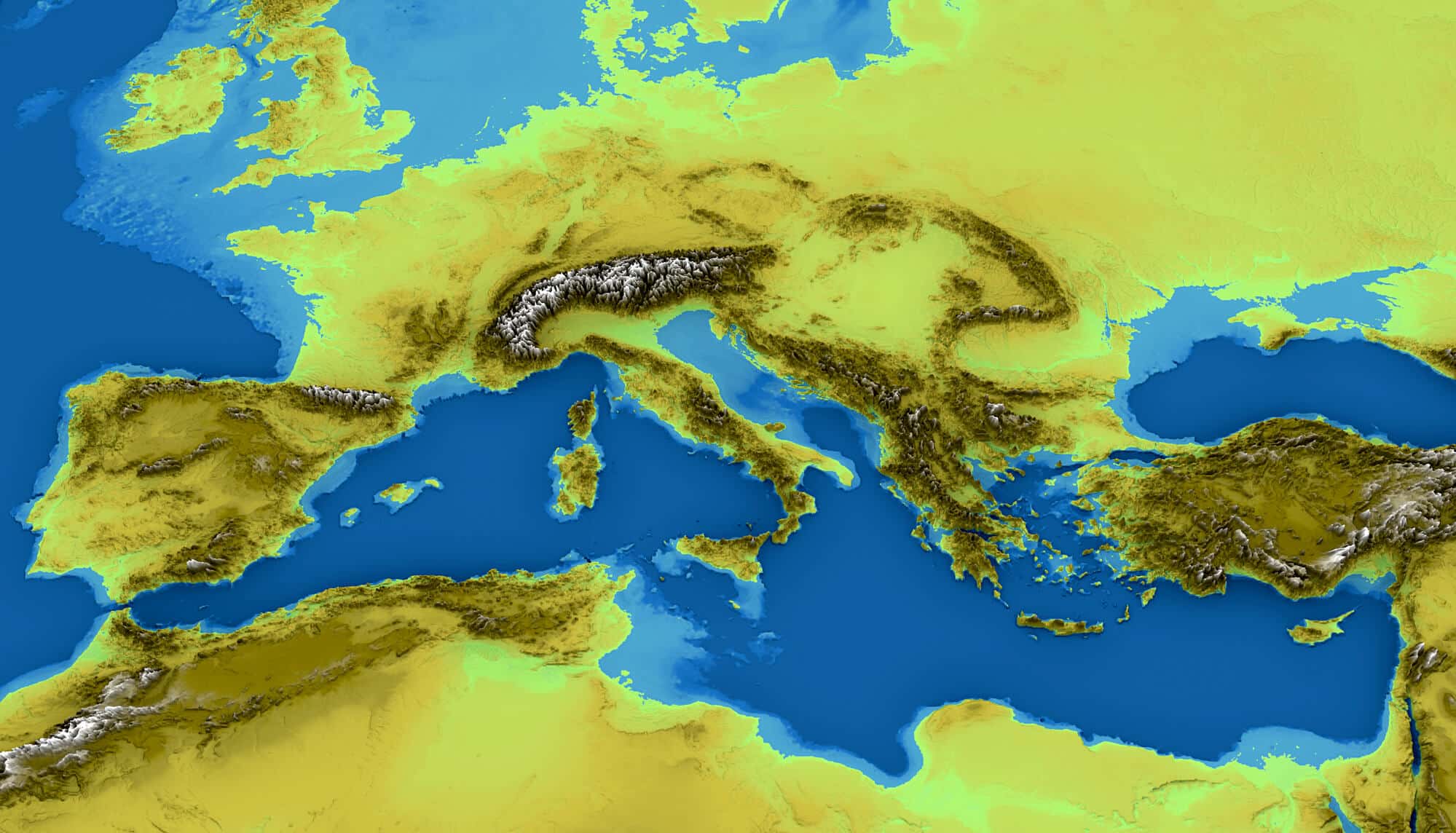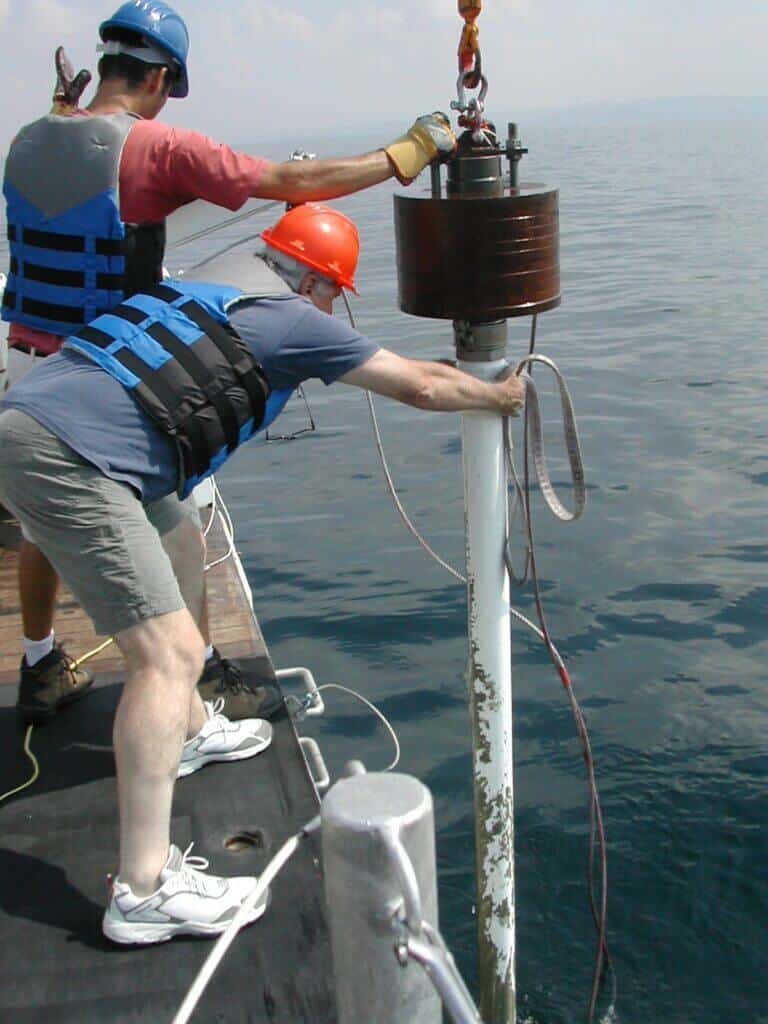Following the drying up of the Mediterranean Sea about five million years ago, valleys developed in its southeast that are about eight kilometers wide and about 1,000 meters deep

About five million years ago, there was a tectonic collision between North-West Africa and the Iberian Peninsula in South-West Europe, which led to the disconnection of the Mediterranean Sea from the global ocean system and led to its desiccation, according to some members of the geological community in Israel and around the world. According to this interpretation, the amount of water that entered the Mediterranean at that time was less than the amount of water that evaporated from it. Thus the sea level dropped significantly (by two and a half to three kilometers, from Haifa to Gibraltar - the entry point of the Atlantic Ocean to the Mediterranean Sea). In addition, the evaporation of the water caused a significant increase in its salinity (until it resembled the current saltiness of the Dead Sea): on the eastern side of the sea, a layer of cooking salt (NaCl - sodium chloride) with a thickness of 2,000-1,500 meters accumulated. After about 700,000 years, the breaching of the Straits of Gibraltar occurred, which caused the entry of about eight million cubic kilometers of water from the Atlantic Ocean into the Mediterranean Sea. Thus it was quickly re-flooded (within a few years) and returned to the global sea system.
Prof. Yossi Mart, marine geologist from the University of Haifa, studies the history of the Mediterranean Sea, including its desiccation and salinity (and also the Red Sea - how it became an ocean). According to him, "We are investigating the drying of the Mediterranean Sea, also in the context of climate change, and the various tectonic consequences. For example, a layer of salt two kilometers thick was formed in the depths of the sea and at its edges, on top of which a clay layer originating from the waters of the oceans accumulated. Due to this, interesting geological structures were created - rock fragments and folds - and through them it is possible to discover, for example, the accumulation of gas in the bottom (sandstones) of the eastern Mediterranean in our area. For, the subsidence of these structures allowed the sand to flow from the land to the sea, and the gas was able to accumulate within this sand. These are interesting natural processes that do not result from human activity."
Recently, the Ministry of Energy gave Prof. Mert and his team geophysical data so that they could give them a geological interpretation as part of their research. These are seismic surveys - the transmission of energy waves that pass through rocks - obtained from artificial earthquakes carried out by oil companies in the southeastern Mediterranean (using an air compressor on a ship) and on land (using five trucks drawn on the ground), in the coastal lowlands (in the Ashdod and Ashkelon area). The goal of the researchers was to decipher the seismic wave data in the context of the formation of the geological structures in the Mediterranean Sea, also following the salinization. For this they used a device for measuring the strength of the waves (seismograph). By analyzing the changing strength of the waves, they discovered that large valleys developed in the southeast of the Mediterranean Sea - which are about eight kilometers wide and about 1,000 meters deep. "We intended to investigate the salt layer and the formation of the geological structures, but then we discovered these valleys and sought to decipher the manner of their formation," says Prof. Mert.

To this end, the researchers used geological methods - they defined rocks in the coastal plain - such as limestone, sandstone and basalt - and discovered remains (fossils) on them. They radiometrically dated them (a method of dating materials that is based on knowing the rate of radioactive decay of natural isotopes), and discovered that they belonged to a large river system that flowed from eastern Israel to the west, into the Mediterranean Sea, 15-10 million years ago. Prof. Mert: "When the level of the Mediterranean Sea dropped about five million years ago, these rivers flowed faster, burrowed within their infrastructures and carved valleys. But earlier, six to seven million years ago, the Dead Sea rift was formed. It kept growing, and about two to three million years ago it stopped the rapid flow of the rivers. Thus they dried up little by little and the valleys that opened up under them, in today's Jordan Valley, remained there. When the level of the Mediterranean Sea rose again due to the breaching of the Straits of Gibraltar, mud, rocks and stones drifted into the valleys and blocked them and they have been closed ever since. These findings reproduce geological processes and also testify to the consequences of fluctuations in the level of the Mediterranean Sea, its drying and rising".

Life itself:
Prof. Yossi Mart, 82, married with a daughter and grandchildren and lives in Haifa. In addition to being a researcher, he serves as the chairman of the committee of the chamber music department in Haifa ("Except for listening to music, I have almost no hobbies. I used to play the piano but I stopped"). He completed his bachelor's and master's degrees at the Hebrew University and his PhD at Texas A&M University.
More of the topic in Hayadan:
- The sea at the top of the mountain
- One of the worst ecological disasters in Israel - tar is released from the sea on the shores of the Mediterranean Sea
- The earliest evidence of aquaculture 3,500 years ago - in the eastern Mediterranean
- The Eastern Mediterranean Sea is 100 million years younger than what was believed until now
